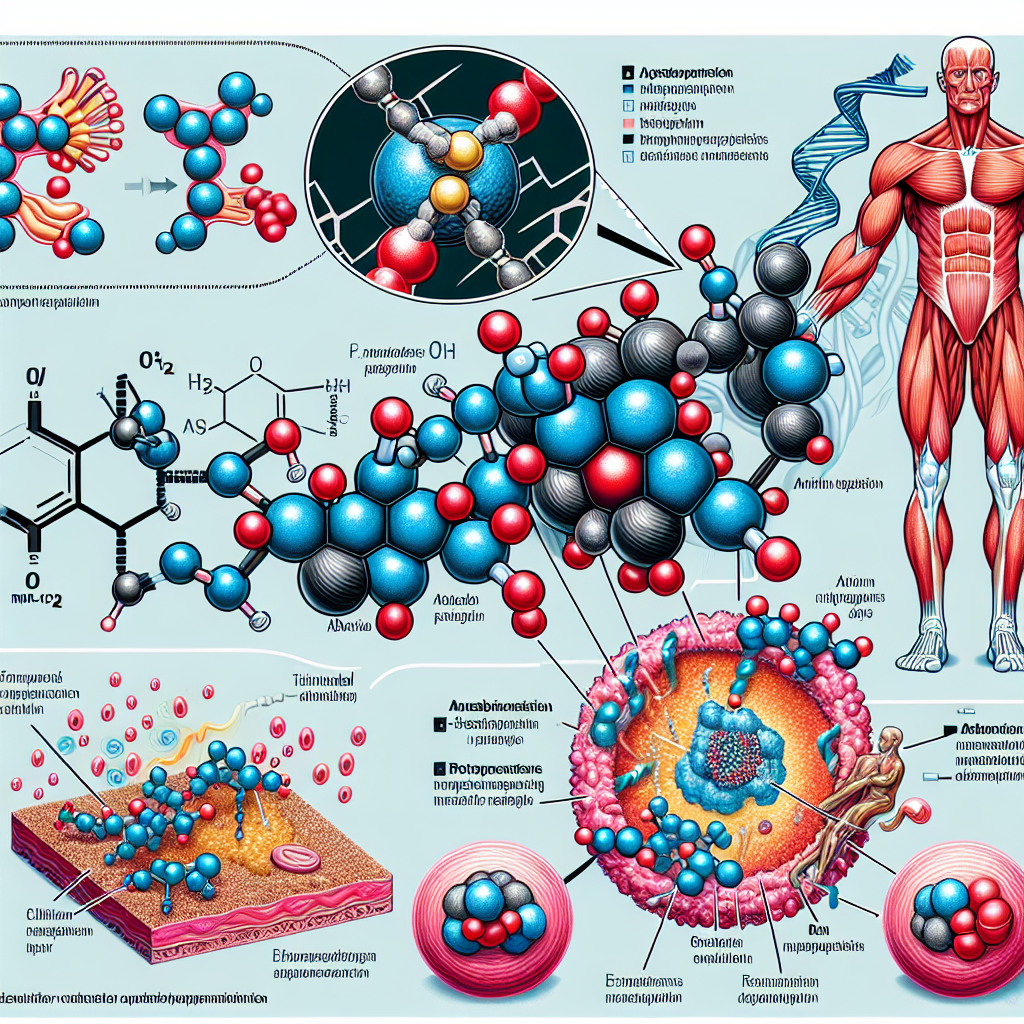How Turinabol Works: Mechanism of Action and Anabolic Effects

Turinabol, also known as Tbol, is an anabolic androgenic steroid (AAS) that was developed in the 1960s by the East German pharmaceutical company, Jenapharm. It was initially used to enhance the performance of their Olympic athletes, but it has since gained popularity among bodybuilders and athletes around the world. Turinabol is a modified form of Dianabol, with an added chlorine atom at the fourth carbon position, which gives it a unique set of properties. In this article, we will explore the mechanism of action and anabolic effects of Turinabol.
The Mechanism of Action of Turinabol
Turinabol works by binding to androgen receptors in the body, which are found in various tissues such as muscles, bones, and the central nervous system. This binding triggers a series of biochemical reactions that ultimately lead to an increase in protein synthesis and muscle growth. Turinabol also has a low affinity for the enzyme aromatase, which converts testosterone into estrogen. This means that it has a lower risk of causing estrogen-related side effects such as gynecomastia (enlarged breast tissue) and water retention.
Another unique aspect of Turinabol is its ability to bind to sex hormone-binding globulin (SHBG), a protein that binds to testosterone and reduces its bioavailability. By binding to SHBG, Turinabol frees up more testosterone to be used by the body, leading to increased muscle growth and strength.
Anabolic Effects of Turinabol
Turinabol is primarily used for its anabolic effects, which include increased muscle mass, strength, and endurance. It also has a low androgenic rating, meaning that it has a lower risk of causing androgenic side effects such as acne, hair loss, and virilization in women. This makes it a popular choice among female athletes and bodybuilders.
One of the main reasons why Turinabol is favored by athletes is its ability to increase red blood cell production. Red blood cells are responsible for carrying oxygen to the muscles, and an increase in their production can lead to improved endurance and performance. This is especially beneficial for endurance athletes such as runners and cyclists.
Turinabol also has a positive effect on nitrogen retention in the muscles. Nitrogen is an essential building block for protein synthesis, and a positive nitrogen balance is crucial for muscle growth. By increasing nitrogen retention, Turinabol helps to create an anabolic environment in the body, promoting muscle growth and recovery.
Case Studies and Statistics
There have been several studies conducted on the effects of Turinabol, both in medical and athletic settings. One study published in the Journal of Clinical Endocrinology and Metabolism found that a daily dose of 10mg of Turinabol for six weeks resulted in a significant increase in lean body mass and strength in male subjects. Another study published in the British Journal of Sports Medicine showed that Turinabol improved the performance of athletes in various sports, including weightlifting, swimming, and track and field events.
In terms of statistics, a survey conducted by the National Institute on Drug Abuse (NIDA) found that the use of AAS, including Turinabol, has been steadily increasing among high school students in the United States. The survey also revealed that the majority of AAS users are male and are using these drugs to improve their athletic performance or physical appearance.
Conclusion
Turinabol is a powerful anabolic steroid that has gained popularity among athletes and bodybuilders for its anabolic effects and low risk of side effects. Its unique mechanism of action, including its ability to bind to androgen receptors and SHBG, makes it a highly effective performance-enhancing drug. However, it is important to note that the use of Turinabol, like any other AAS, comes with potential risks and side effects. It is essential to use it responsibly and under the guidance of a healthcare professional to minimize these risks.
In conclusion, Turinabol works by binding to androgen receptors and SHBG, leading to increased protein synthesis, muscle growth, and endurance. Its anabolic effects have been supported by various studies and statistics, making it a popular choice among athletes and bodybuilders. However, it is crucial to use it responsibly and be aware of the potential risks and side effects associated with its use.

